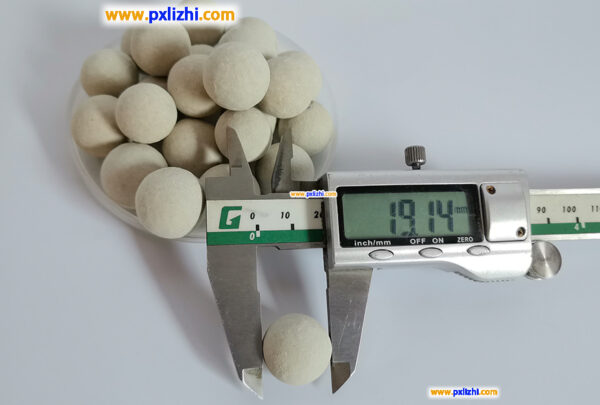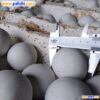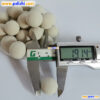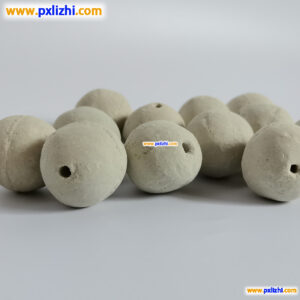
Catalyst supporting ball
Catalyst support ball is an important material widely used in petroleum, chemical, fertilizer, natural gas and environmental protection industries. It is mainly used in the reactor, as a catalyst covering support material and tower packing, with high temperature and high pressure resistance, low water absorption, chemical stability, can withstand acid, alkali and other organic solvents corrosion, and can withstand temperature changes in the production process. Its main function is to increase the gas or liquid distribution point, support and protect the active catalyst with low strength, so as to extend the service life of the catalyst and improve the space utilization of the reactor.

Catalyst ceramic ball application
- Catalyst carrier: In petroleum, chemical, pharmaceutical and other fields, ceramic balls as catalyst carriers can provide suitable surface and pore structure, so that the catalyst can be better dispersed on the carrier, thereby improving the utilization rate and reaction efficiency of the catalyst.
- Packing: Ceramic balls can be used to increase the volume and density of the mixture and improve the fluidity and separation performance of the mixture. For example, in the oil industry, ceramic balls can be used for oil-water separation and sewage treatment;
- Support and protect the catalyst: the ceramic ball is used as the support and covering material of the catalyst in the reactor, which can buffer the impact of the liquid and gas into the reactor on the catalyst, protect the catalyst, and improve the distribution of the liquid and gas in the reactor.
- Adsorption filtration: Microporous porcelain ball on the basis of inert alumina porcelain ball with adsorption of structural micropores, can be adsorbed and filtered impurities in oil, such as granular, colloidal, leaching and heavy metals, so as to protect the catalyst, and extend the operation cycle of the device.
How to extend the life of catalyst support ball:
Prevent physical damage: During the installation, operation and maintenance of the reactor, violent collisions and vibrations should be avoided as far as possible. Because the catalyst support ball may be broken due to external mechanical impact, resulting in damage to its physical structure. For example, when handling a reactor equipped with catalyst support balls, appropriate lifting equipment and transport vehicles should be used and smooth operation ensured.
Prevent chemical contamination and poisoning: Ensure that the feedstock entering the reactor is adequately purified. Impurities in the raw material, such as dust, metal ions, sulfides, etc., may be deposited on the surface of the catalyst support ball or chemically react with the support ball, affecting its performance. For example, in some chemical synthesis reactions, the raw material gas may contain a small amount of sulfur compounds, which may react with the metal composition in the support ball, causing the chemical properties of the support ball to change. Therefore, it is necessary to set up filtration, adsorption and other purification devices before the raw material enters the reactor to remove harmful impurities.

Temperature control: Maintain the reaction temperature within the appropriate range. Too high temperature may lead to changes in the material properties of the catalyst support ball, such as ceramic support ball may appear sintering phenomenon, reduce its porosity and specific surface area, affect the load of the catalyst and the diffusion of the reaction material. The excessively cold environment may cause some reaction materials to condense on the surface of the support ball, leading to blockage. Fourth, regular inspection and replacement: regular appearance inspection of the catalyst support ball. Observe whether the supporting ball is broken, worn, discolored, etc. The reactor can be opened for inspection through an observation window on the reactor or during shutdown maintenance. If a broken support ball is found, it should be cleaned out in time to avoid affecting the normal operation of the reactor.











Reviews
There are no reviews yet.